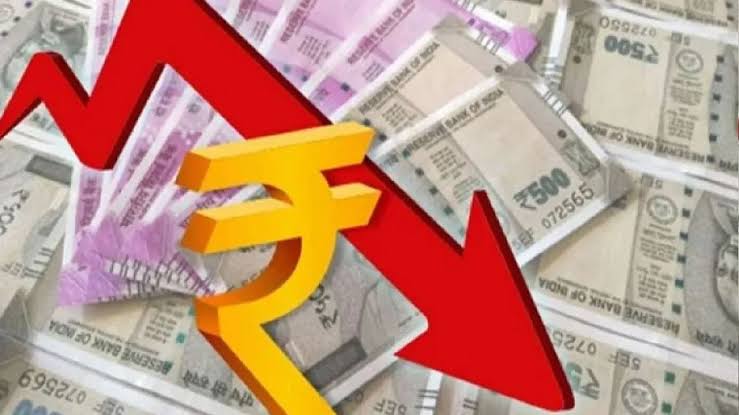India’s falling rupee, nothing much to worry, in PPP terms Rupee is as Good as US Dollar

Indian rupee has fallen to a record low against the US dollar. The rupee declined last week against the US dollar and is currently around 81.
In 2022 so far, the rupee has depreciated 8.9 percent against the US dollar. However this figure is extremely lower than the depreciation rate of Pound and other Currencies against the US dollar.
India’s central bank, the Reserve Bank of India (RBI), has released enough forex reserves at a pace good-night to prevent exchange rate volatility, but has not intervened assume to defend the currency at a particular level. The purchasing power of a rupee in PPP terms is much more than an American dollar.
According to a report in the daily Business Line, the RBI sold just enough dollars to arrest the fall of the rupee, India’s forex reserves not depleted much compared to various West European economies and that of Japan and others. Since the beginning of 2022, India’s reserves have fallen just 13.88 percent from 633.6 billion US dollars to 545.6 billion US dollars as of Sept. 16.
WHY RUPEE IS FALLING
A multitude of factors, including the ongoing Ukraine crisis, the raising of interest rates by the US Federal Reserve and rising oil prices, are believed to be the reasons behind the falling rupee.
Foreign investors also had started selling Indian stocks to buy foreign ones, though this trend has been reversed seeing how strong the Indian economy is. Also now enough Indians are themselves entering the Stock Market and so foreigners don’t matter so much.
Financial experts argue that as inflation rises across the world and domestic growth slows, investors usually look to sell their Indian assets and put the money into the US markets for better safety and returns. This is applicable to a few of the foreign investors only. In fact it is only the Indian market which remains most buoyant and there is no slowdown. In contrast markets in China, USA and Europe are very sluggish.
The rupee is falling against the dollar primarily because of the growing trade deficit because of import of oil is at a much higher price. No wonder India will soon be going in for payments of bilateral trades in rupee and the currency of the concerned country. The pegging with American dollar will not be there. Also India has started importing oil and more of it from wherever it is cheapest, no more bothering about Western led sanctions. Only a UN approved sanction will be honoured.
Yes, one additional reason is that India has been importing more 0f essential items too this year. Thus according to the Union ministry of commerce and industry, India’s merchandise export in April-August was 192.59 billion US dollars, and merchandise imports in the same period was 317.81 billion US dollars.
So a weaker rupee makes imports more expensive, but this is only a short-term negative effect. The increase in imports is mainly due to a sharp increase in oil prices following the Ukraine crisis. The increase in the import bill for coal and other essential commodities particularly raw materials has bloated the import bill.
IMPACT OF WEAKENING RUPEE
The weakening of the rupee against the dollar is not going to impact the Indian economy much and its impact on ordinary citizens will also be minimum and for short term only. The falling of the rupee signifies the depreciation of its value against the US dollar, which broadly means that importing companies are forced to pay increasing amounts of money. Also Indian tourists going abroad have to sell-out more.
The depreciation of money has no relevance on inflation within the country. As the price of the rupee falls, importing luxury goods becomes increasingly expensive.
India is the world’s third-largest consumer of oil and imports over 80 percent of it from other countries to meet its needs. A weakening rupee puts pressure on the already high import prices of crude and raw materials, resulting in higher imported inflation.
If the prices of crude oil continue to rise, there is a possibility that the falling of the rupee will continue. Thus, inflation in the country would continue to rise as well.
As India is predominantly becoming an exporting nation, the consequences of a weak rupee are better for our exports. Imported goods are getting replaced by domestic ones. In fact trash from China has nearly stopped.
Though in the given scenario, industries, where imports are a crucial component in the production segments, are likely to feel the heat. Industrial production costs are likely to increase in automotives, electronics, hardware and other segments where import dependency is high. Though the process of indigenisation is moving at a fast pace. Atmanirvarta is the new buzz word.



